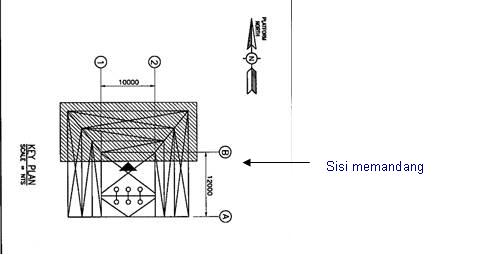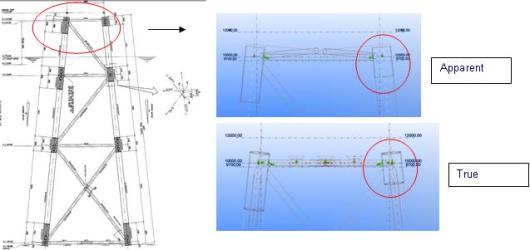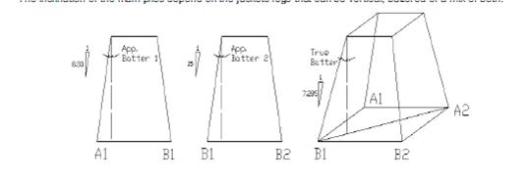Minyak Bumi pertama kali ditemukan di Timur tengah (Parsi kuno/Iran) yang ditemukan sebagai rembesan yang muncul kepermukaan dan diperkirakan bahwa Nabi Nuh adalah orang yang pernah menggunakan minyak bumi ini untuk menambal perahunya agar tidak kemasukan air, dimana minyak bumi yang dipergunakan berbentuk Asphalt atau Teer.
Pada zaman berikutnya juga ditemukan gas bumi yang muncul ke permukaan dan terbakar sehingga pada waktu itu muncul agama yang menyembah api yang abadi (agama Parsi), kemudian pada zaman Harun Al Rasyid juga telah dikenal istilah minyak bumi yang digunakan sebagai bahan bakar (Naphta). Industri minyak bumi yang modern muncul di AS pada abad ke 19 dan disusul oleh beberapa negara Eropa dan lainnya. Sebelum minyak bumi diusahakan secara komersil, minyak bumi juga telah lama dikenal di AS dan ditemukan sebagai rembesan. Pada tahun 1794 sebelum minyak bumi digunakan di dunia industri Haquet mengemukan teorinya bahwa minyak bumi berasal dari daging atau zat organik lainnya seperti kerang dan moluska, hal ini didasari bahwa batuan yang mengandung minyak bumi biasanya mengandung fosil binatang laut.
Von Humbold da Gay Lussac (1805) memperkirakan bahwa minyak bumi berhubungan dengan aktivitas gunung api dan ide ini juga dikemukan oleh ahli geologi Perancis Virlet d’Aoust (1834), teori ini didasarkan sering kali minyak bumi ditemukan bersama-sama dengan lumpur gunung api. Sir William Logan (1842) menghubungkan rembesan minyak bumi dengan struktur antiklin dan ini merupakan pengamatan pertama yang menghubungkan rembesan dengan antiklin. Tahun 1847 di Glasgow (Inggris) pertama kali ditemukan suatu cara mengolah minyak bumi menjadi minyak lampu yang menggantikan lilin sebagai sumber penerangan utama waktu itu dan dengan penemuan tersebut maka minyak bumi merupakan bahan yang dicari oleh pengusaha.
Tahun 1859 merupakan saat pertama munculnya industri minyak, pengeboran dilaksanakan di Tutisville negara bagian Amerika Sarikat dan minyak bumi ditemukan pada kedalaman 69 Ft. Pada Akhir abad ke 19 pencarian minyak bumi telah menyebar di luar AS terutama Amerika Latin (Mexico) tahun 1890 dan Eropa Timur (Romania & Rusia) serta daerah Asia (Burma dan Indonesia). Explorasi di Timur Tengah di mulai pada tahun 1919 dan tahun 1927 dilakukan pengeboran sumur pertama dan ditemukannya lapangan minyak Kirkuk dengan produksi sumur sebesar 100.000 bpd. Tahun 1939 beberapa lapangan minyak raksasa ditemukan di Saudi Arabia dan Kuwait dan pada tahun 1960 dilakukan pencarian minyak bumi di lepas pantai (Off Shore).
SEJARAH INDUSTRI MIGAS DI INDONESIA
Minyak bumi telah dikenal di Indonesia sejak abad pertengahan dan hal ini telah digunakan oleh masyarakat Aceh dalam memerangi armada Portugis. Industri minyak bumi modern dimulai pada tahun 1871 yaitu dengan dilakukan pencarian minyak bumi di desa Majalengka (Jabar) oleh seorang pengusaha Belanda Jan Reerink (tetapi gagal).
Minyak bumi telah dikenal di Indonesia sejak abad pertengahan dan hal ini telah digunakan oleh masyarakat Aceh dalam memerangi armada Portugis. Industri minyak bumi modern dimulai pada tahun 1871 yaitu dengan dilakukan pencarian minyak bumi di desa Majalengka (Jabar) oleh seorang pengusaha Belanda Jan Reerink (tetapi gagal).
Penemuan sumber minyak pertama tahun 1883 yaitu lapangan minyak Telaga Tiga dan Telaga Said di Pangkalan Berandan (Sumut) oleh A.G Zeijkler (Belanda), penemuan ini juga disusul oleh penemuan lain yaitu lapangan minyak Ledok di Cepu (Jateng), Minyak Hitam di Muara Enim (Sumsel) dan Riam Kiwa daerah Sanga-sanga (Kalimantan). Penemuan sumber minyak Telaga Said oleh Zeijlker merupakan modal pertama bagi berdirinya perusahaan minyak yaitu Shell. Tahun 1902 didirikan perusahaan dengan nama Koninklijke Petroleum Maatschappij yang kemudian bergabung dengan Shell Transpor Trading Company dan menjadi perusahaan yang diberi nama The Asiatic Petroleum Company atau Shell Petroleum Company. Tahun 1907 dirikan Shell Group yang terdiri dari Bataafsche Petroleum Maatschappij (BPM) dan Anglo Saxon dan pada waktu yang sama di Jatim ada perusahaan dengan nama Dordtscge Petroleum Maatschappij dan akhirnya perusahaan ini juga diambil oleh BPM.
Tahun 1912 Perusahaan AS masuk ke Indonesia dan membentuk perusahaan N.V. Standard Vacuum Petroleum Maatschappij (SVPM) yang mempunyai cabang di Sumsel dengan nama Nederlandsche Koloniale Petroleum Maatschappij (NKPM) yang sesudah perang dunia ke II menjadi PT. Stanvac Indonesia. Untuk mengimbangi perusahaan AS maka pemerintah Belanda mendirikan perusahaan gabungan dengan BPM yaitu Nederlansch Indische Aardolie Maatschappij dan setelah perang duni ke II menjadi PT. Permindo yang kemudian menjadi PN. Pertamina.
Tahun 1920 hadir dua perusahaan AS yang baru yaitu Standard Oil of California dan Texaco dan tahun 1930 membentuk Nederlansche Pacific Petroleum Mij (NPPM) yang sekarang menjadi PT. Caltex Pacific Indonesia. Perusahaan ini melakukan ekplorasi di Sumatera Tengah (1935) dan menemukan lapangan minyak Sebanga (1940) serta lapangan minyak Duri (1941). Didaerah konsesi ini tentara Jepang menemukan lapangan raksasa yaitu lapangan minyak Minas yang kemudian di bor kembali oleh PT. CPI tahun 1950.
Tahun 1945 -1950 semua instalasi minyak di ambil alih oleh pemerintah Indonesia dan tahun 1945 didirikan PT. Minyak Nasional Rakyat yang tahun 1954 menjadi Perusahaan Tambang Minyak Sumatera Utara. Tahun 1957 didirikan PT. Permina oleh Kol. Ibnu Suowo yang menjadi PN. Permina tahun 1960. tahun 1959 NIAM menjadi PT. Permindo dan tahun 1961 menjadi PN. Pertamin. Pada waktu yang sama di Jatim dan Jateng telah berdiri PT. MRI (Perusahaan Tambang Minyak Republik Indonesia) yang kemudian menjadio Permigan dan tahun 1965 di ambil alih oleh PN. Permina.
Tahun 1961 sistem konsesi perusahaan asing dihapus dan diganti dengan sistem kontrak karya. Tahun 1964 perusahaan SPCO diserahkan ke Permina dan 1965 seluruh kekayaan BPM – Shell Indonesia di beli oleh PN. Permina dan di tahun tersebut dimulainya kontrak bagi hasil. Tahun 1968 PN. Permina dan PN. Pertamin digabung menjadi PN. Pertamina.



















